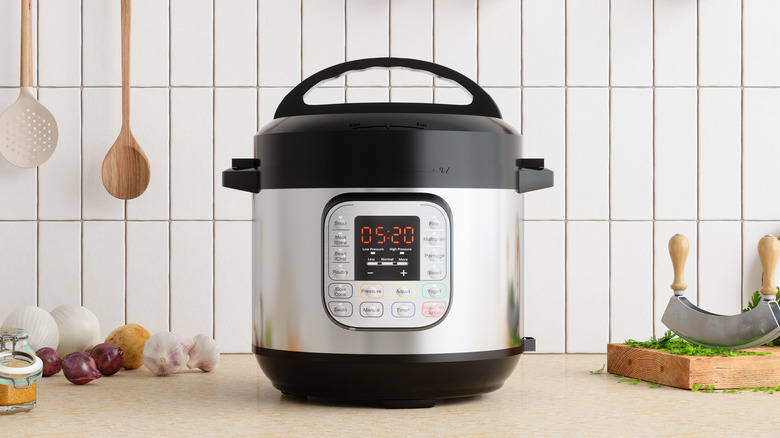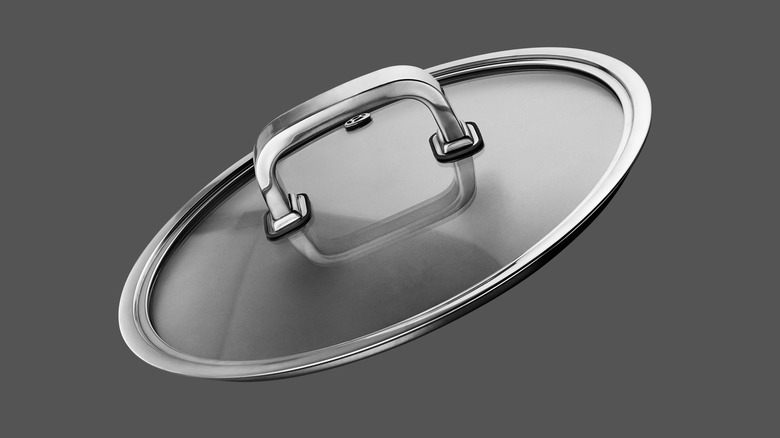The First Step To Take When Using Your Instant Pot As A Slow Cooker
We may receive a commission on purchases made from links.
It's all in the name — Instant Pots deliver speedy, tender results without cutting back on flavor. But there's still a time and place for slow cooking, especially when you want to throw everything together to meld for 10 hours while surmounting those busy days. Luckily, low-heat cooking is one of the 13 commonly overlooked functions of an Instant Pot, so you don't have to buy another device to get the job done. There's only one snag — devotees of this device often report that this feature doesn't perform as well as standalone models. A quick fix? Buy a different lid.
What type of lid works best? One made out of glass is your best bet. These Instant Pot lids are a great choice and come in 3, 6, and 8-quart sizes. But you're not limited to brand-name options as long as you make sure your top choice has a few fundamental features. Firstly, go for tempered glass. This heat-treated substance is four times tougher than the usual variety, so it won't shatter on your pot or even in the oven.
It's also important to have a steam-release vent, which avoids pressure buildup while retaining moisture within — a delicate (yet important) balance. Look for a metal rim along the glass circumference, which reinforces the strength of the lid and ensures you have a durable tool at your disposal. Finally, make sure the handle works for you, choosing between a traditional handle and a knob.
Additional tips for taking the plunge into Instant Pot slow cooking
While a glass lid solves most slow-cooking woes, there are a few other things you can do to make the most of this gentle-cooking feature. Instant Pot's ceramic insert will benefit slow cooker recipes by ensuring even heating on the bottom and sides of the container. Some stews don't perform as well with the included metallic pot — it's worse with heat retention and may not be as safe, potentially leaching metals into your dishes.
Another must for slow cooking in the Instant Pot is adding liquid, which creates steam and heats everything evenly. This is also a requirement for pressure cooking, so it should be easy for seasoned users to follow. But be mindful of how much you add — you'll need at least 1 cup of liquid to properly convert your recipe.
Finally, adjust cooking times and temperatures when converting traditional slow cooker recipes. The Instant Pot works differently than traditional slow cookers; its pot is thinner, and it heats solely from the bottom, as opposed to along the sides of the unit. There are a few solutions here — you can stick to cookbooks and blogs that exclusively focus on Instant Pot slow cooking. You can also use the "normal" Instant Pot slow cooker setting for traditional slow cooker recipes that call for the "low" setting; for high-heat slow cooker recipes, select the "more" function and add 15 minutes per hour. Experiment and find what works best for you.


